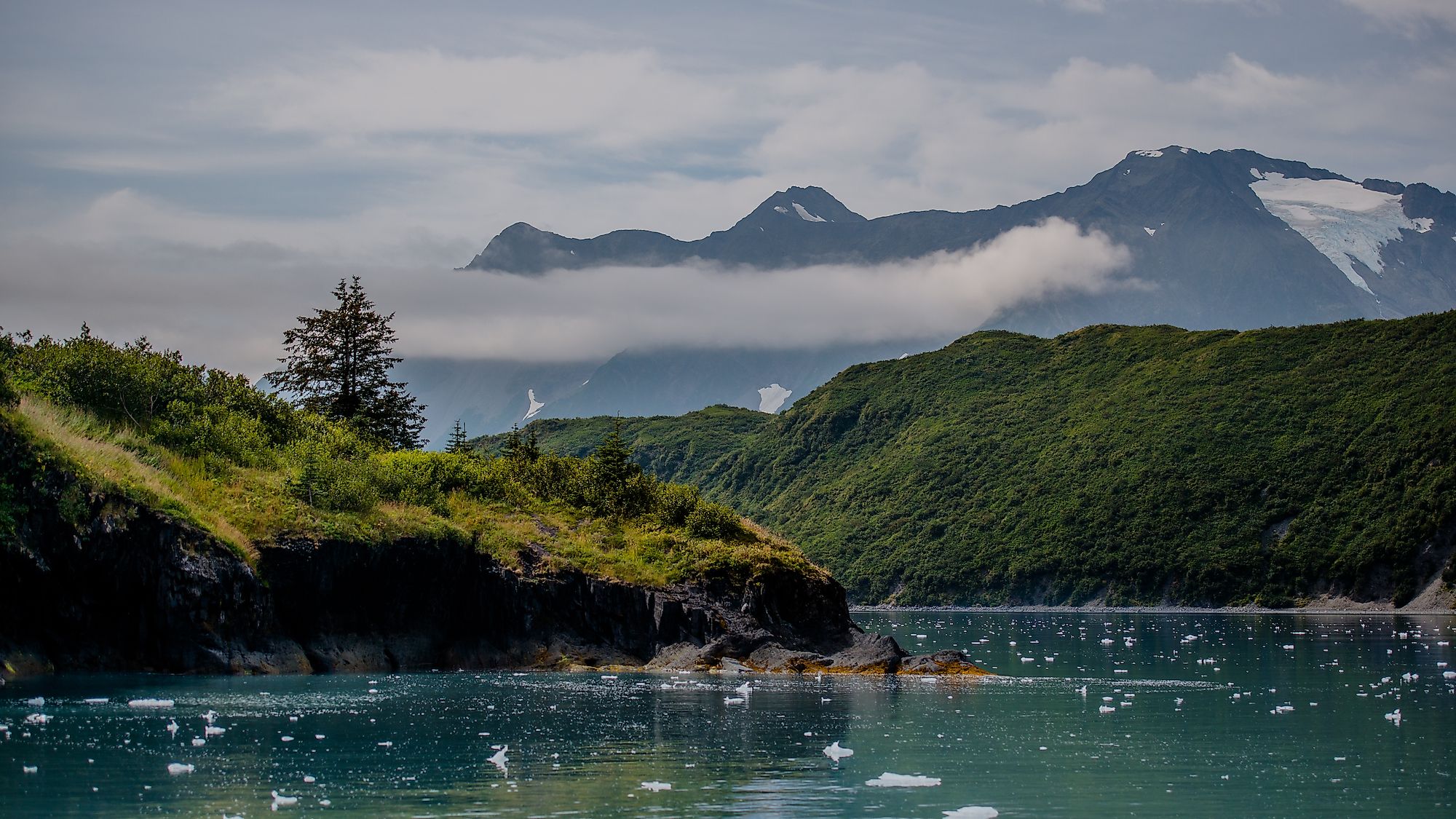
Prince William Sound
Prince William Sound is an irregular inlet of the Gulf of Alaska that is situated on the southern coast of Alaska, United States. Prince William Sound is located on the eastern side of the Kenai Peninsula and is dotted with numerous islands and fjords. This 112.6km wide sound extends for about 48.2km in the north and west from the Gulf of Alaska to the Kenai Peninsula.
Geography
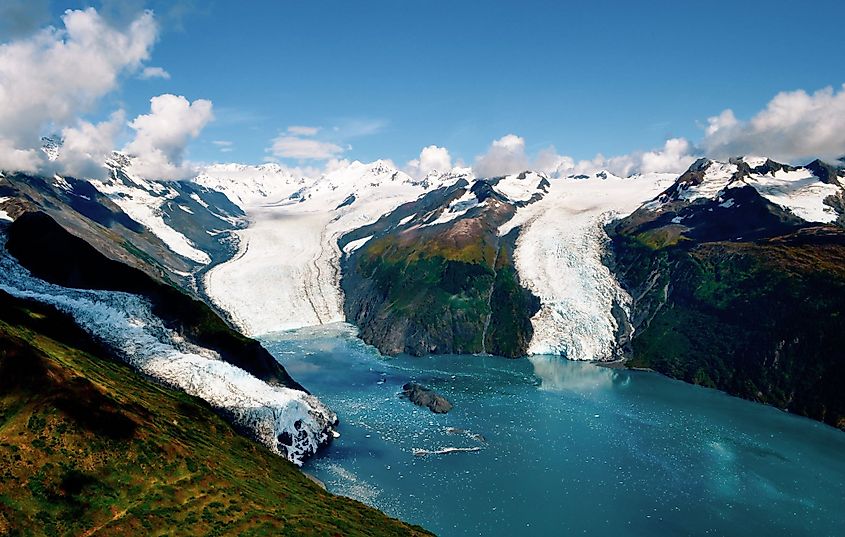
A major part of the land that surrounds the Prince William Sound forms a part of the Chugach National Forest, which is considered the second-largest national forest in the United States. In the north, the sound is bordered by the glaciated Chugach Mountains. In the southeast, the Prince William Sound is bordered by the Montague and Hinchinbrook Islands. These islands form the Hinchinbrook Entrance, which is a 16km long water passage from the Gulf of Alaska to the Prince William Sound. The sound contains more than 150 glaciers including 17 tidewater glaciers. The most prominent glacial feature in the Prince William Sound is the Columbia Glacier, which is one of the largest tidewater glaciers along the coast of Alaska.
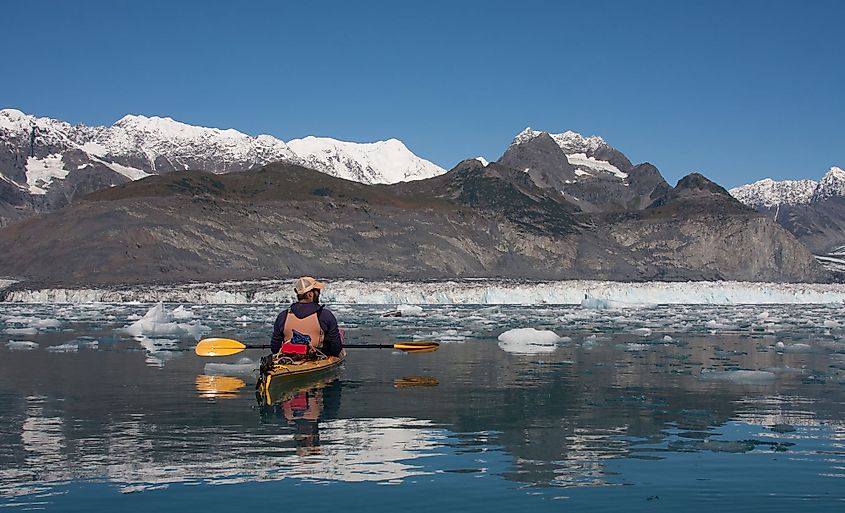
Located on the Prince William Sound, about 490km to the east of the city of Anchorage is the port city of Valdez, which is North America’s northernmost all-year port. Valdez also forms the southern terminal of the Trans-Alaska Pipeline System. There are several settlements in the Prince William Sound including the cities of Cordova and Whittier and the indigenous villages of Tatitlek and Chenega.
Ecology
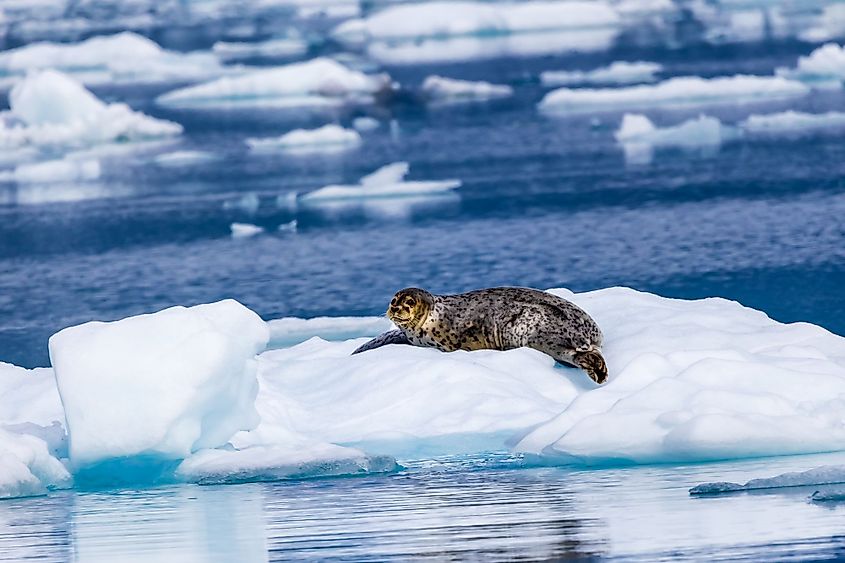
Besides being commercially important for the fishing and oil industries, Prince William Sound is renowned for its large number of marine and coastal life. The coastal areas contain rainforests of western hemlock and Sitka spruce trees and over 30 species of terrestrial mammals, 220 species of birds, and numerous marine mammal species are found there. Some of the avian species that have been recorded here include bald eagles, glaucous-winged gulls, marbled murrelets, black-legged kittiwakes, etc. The resident marine mammals that are found in the Prince William Sound include humpback whales, minke whales, fin whales, sea lions, sea otters, harbor seals, etc.
Brief History
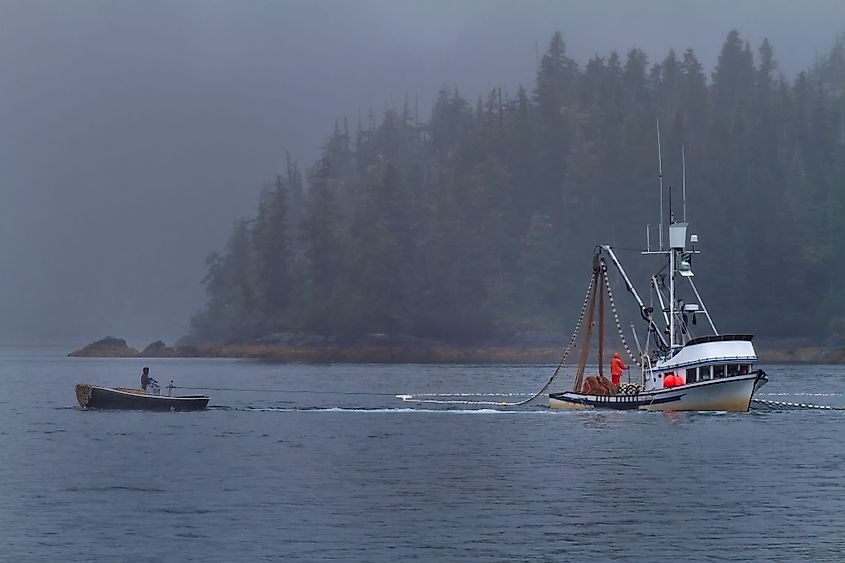
In 1778, the British explorer Captain James Cook first entered Prince William Sound and named it “Sandwich Sound” in the honor of his patron the Earl of Sandwich. In the same year, the British navigator Captain George Vancouver rechristened the “Sandwich Sound” as “Prince William Sound” in honor of Prince William Henry, the third son of King George III. The Spanish explorer Salvador Fidalgo visited the sound in 1790 and named several of its features including Port Valdez and Cordova. In 1793, Port Voskresenskii on the southern edge of the Prince William Sound was founded by the Russian trader Alexander Baranov.
On March 27, 1964, the area was severely affected by the Great Alaskan earthquake that unleashed an 8.2m high tsunami leading to widespread devastation in the coastal areas along the Gulf of Alaska. This 9.2 magnitude earthquake is considered one of the most powerful earthquakes to be recorded in the history of North America and also the world’s second most powerful earthquake. Prince William Sound also served as the site of a large oil spill from the oil tanker “Exxon Valdez” on March 24, 1989. It has been estimated that due to the delayed efforts in containing the oil spill, about 10.9 million gallons of crude oil was dispersed by strong winds and waves across the entire Prince William Sound. As a result of this massive oil spill, about 2,092km of the sound’s indented shoreline and surrounding waters were polluted and over 250,000 seabirds, 250 bald eagles, 22 killer whales, 300 harbor seals, and 3000 sea otters were killed. The Valdez spill is considered to be one of the worst environmental disasters caused by anthropogenic activities.











